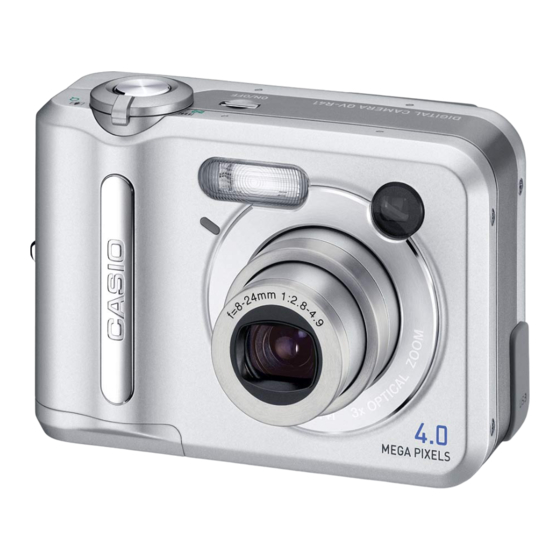
Table of Contents
Advertisement
Quick Links
Digital Camera
QV-R41/QV-R51
User's Guide
Thank you for purchasing this CASIO
Product.
• Before using it, be sure to read the
precautions contained in this User's Guide.
• Keep the User's Guide in a safe place for
future reference.
• For the most up-to-date information about
this product, visit the CASIO Website at
http://world.casio.com/.
All example procedures in this User's Guide are based
on the QV-R51. The same procedures also apply to the
QV-R41, unless specifically noted otherwise.
K866PCM2DKX
E
Advertisement
Table of Contents








Need help?
Do you have a question about the QV-R41 and is the answer not in the manual?
Questions and answers